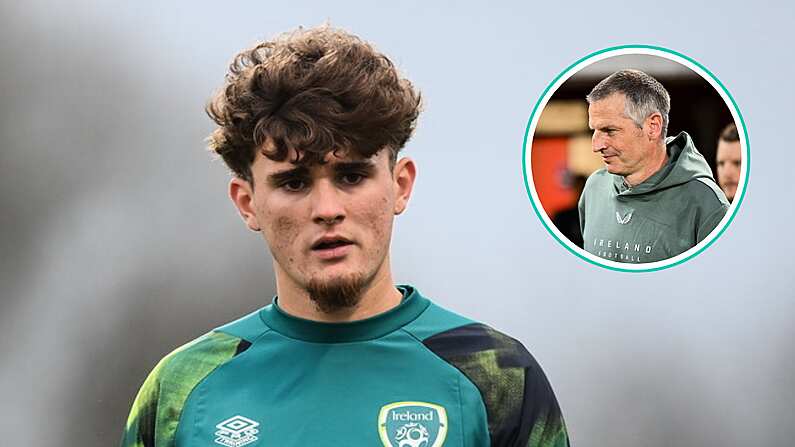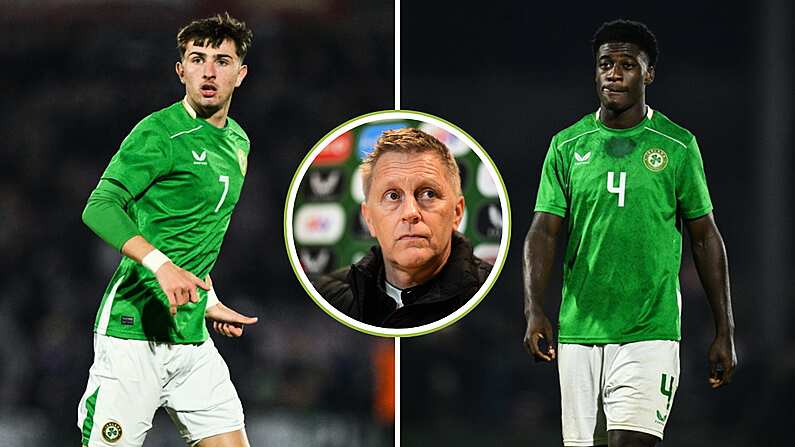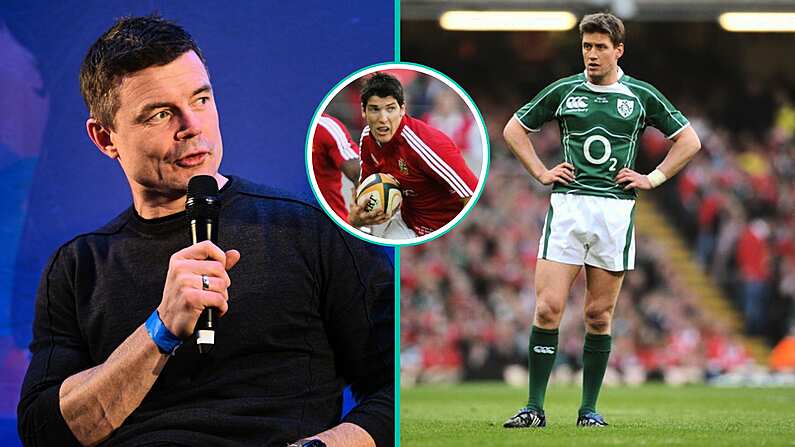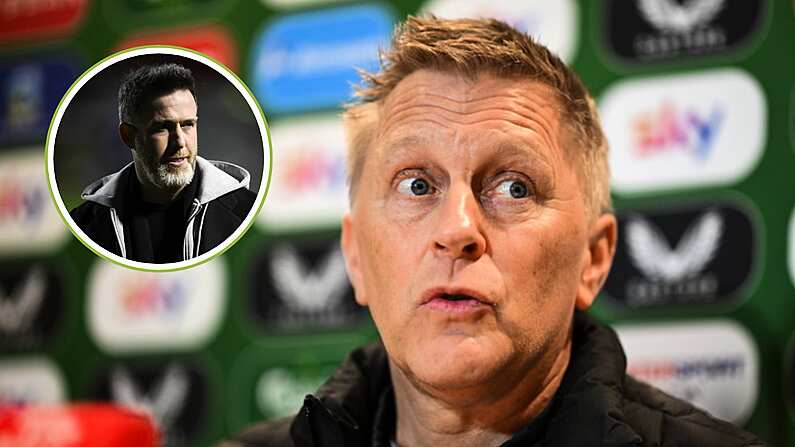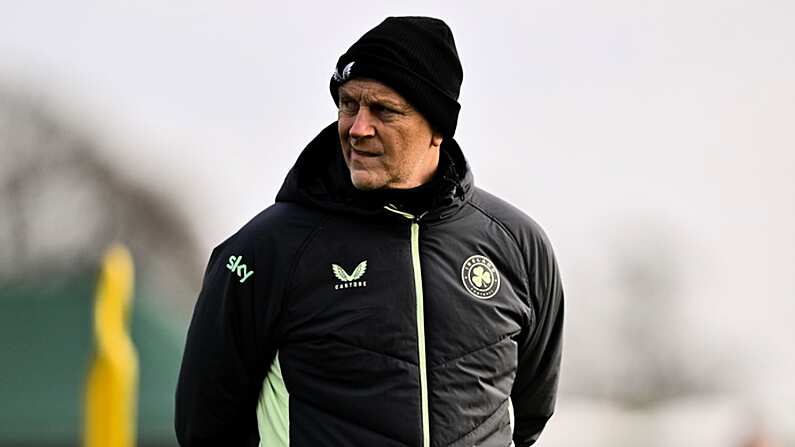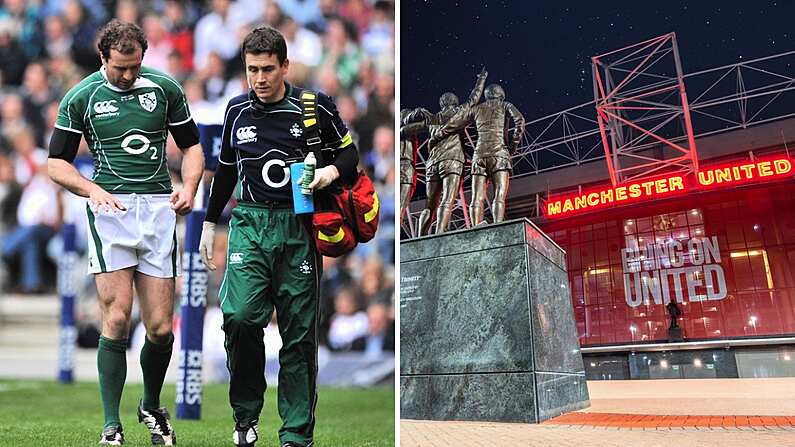Wherever football and lateness meet, the results are usually exciting. As Ireland fans, memorable late moments generally revolve around a staggering defensive masterclass; Richard Dunne somehow keeping the Russians at bay.
Cast the net wider, and a sample of Manchester United or City fans would have their own, memorable moments where the very limits of lateness were tested.
In these moments of lateness, just before becoming too late, being late assures that one is still being, still has time, still has a chance - albeit all in a limited timeframe.
In this regard, lateness possesses a peculiar economy.
Contemplating the idea that an awareness of being late can inspire change in the works of great artists, Edward Said explored the phenomenon of "late style":
[It is] a moment when the artist who is fully in command of his medium nevertheless abandons communication with the established social order of which he is a part and achieves a contradictory, alienated relationship with it.
Edward Said didn't have football in mind when he wrote On Late Style, the first compendious account of this phenomenon that he - almost fittingly - died while writing.
Yet, as can be demonstrated through the arcs of two careers, football and "late style" go hand in hand.
Singularly, "late" and "style" possess certain footballing connotations; the former signifying a moment of drama ("And Solskjaer has won it"), the latter an important understanding of how we like our football to be played, how we like our football to look.
While Said's theory sought to investigate lateness as a precursor to death, football, like art, doesn't die - it never lives to begin with. The object does not enter a period of "late style", rather it is the subject, the artist, the footballer, who becomes late.
********************
The career of a professional footballer is susceptible to lateness in a most unforgiving manner; "his legs are gone", "he's lost a yard", "he's over the hill", etc.
While certain players (Totti, Ibrahimovic, Giggs) are capable of extending the parameters of lateness through a variety of subtle changes and dogged determination, in the end they are, as Clive James wrote, merely examples of "how long it took / Silence to do what it was bound to do."


In others, the onset of the natural, expected end fails to subscribe to this downturn, incorporating instead something altogether new, at a time that is "beyond what is acceptable and normal."
Marking the 2008 return of 58-year old Eddie Macken to showjumping, an article in the Irish Independent outlined how Macken's return evoked thoughts of Said's theory:
Philosopher Edward Said propagated a theory of "late style" in the arts, in which he outlined the proclivity towards continually strong achievement in later life.
Yet, it was a flawed analogy. Yes, late style does suggest "strong achievement in later life". However, it cannot be viewed as a mere continuation of what went before. Late style is rooted in anachronism.
It demands change in the artist, or even the show-jumper. Macken, akin to Giggs, Ibrahimovic or Totti, is excelling in terms of the life of a sportsperson, but this is scarcely what Said had in mind.
In Beethoven, the artist about whom most late style scholarship has been devoted, late style "shows more traces of history than of growth." This is not so much a period in which new trees are planted, rather it is a drastic overhaul of the landscape altogether.
With Paul Scholes and Andrea Pirlo, we have two footballers who evoke a sense of late style in a more typically Saidian manner.
Determining whether Scholes and Pirlo improved with age, or, in outlasting many of their more feted contemporaries and teammates, simply became more visible due to their sustained level of excellence, is thus irrelevant.
The issue at hand is why in their later years as footballers, they inspired a degree of interest, acclaim, awe and loss that was previously not quite so forthcoming.

Throughout Italy's run to World Cup success in 2006, Pirlo's importance is measurable in a very practical manner. Directly contributing (one goal, four assists) to five of the twelve goals Italy scored, Pirlo also converted the opening penalty in the victorious shoot-out against France.
Named man of the match for the final itself, the Italian came a respectable ninth in that year's Ballon d'Or listings. With his national captain, Fabio Cannavaro, claiming the award, and Gianluigi Buffon the only other Italian player to place higher, the general consensus remained that players such as Thierry Henry, Ronaldinho, Zinedine Zidane, Samuel Eto'o, Miroslav Klose and Didier Drogba had done more in 2006.
This raises a question about the actuality of Pirlo's placing here. With Henry, Ronaldinho and Eto'o reaching that year's Champions League final, and Zidane, alongside Klose, having very memorable World Cup campaigns, it is perhaps the 8th placed Drogba who reveals best Pirlo's relative over-achievement in finishing just below him.
In terms of club success, Buffon spent the latter half of 2006 with Juventus in Italy's Serie B after the Calciopoli scandal uncovered in May of that year. Cannavaro, at 33, split 2006 between a spell at Juventus and Real Madrid; neither of which demonstrated the form he captured during that summer.
If the club situations of the two players ranked #1 and #2 were more or less overlooked then, why did Pirlo, a man who had demonstrated his importance so clearly throughout that same campaign, rank so far beneath his two teammates?
Contemplate the votes awarded and Pirlo's weighted 17 votes placed him significantly closer to the bottom of this list than the top; Cannavaro's 173 and Buffon's 124 demonstrating the gulf.
In 2007, aided no doubt by AC Milan's Champions League win, Pirlo found himself finishing fifth overall; his 41 points still some way shy of the 444 Kaka in first place accumulated. At 28 years of age, generally accepted as a period in which a footballer peaks, it would not have been wholly unexpected if Pirlo were not to again that feature in such circles.
His 9th and 5th place finishes, while entirely deserving, demonstrated perhaps that this kind of player had done extremely well to get this far, and probably shouldn't expect to do so again.
For the next four years, he didn't. Never coming within the top 20 or so footballers chosen, why then in 2012 did the Italian all of a sudden find himself back within the top 10? What had happened?


Paul Scholes' career cannot be measured in such terms. Having never so much as received a vote from the Ballon d'Or delegates, his sole appearance on the final long-list came as part of a twenty-two man strong panel of players who finished joint-28th on 0 points in 2001.
Akin to the expected development of Pirlo when the Italian placed fifth as a 28 year old in 2007, Scholes' highest - and only - placing came therefore as a 27 year old; once again on the precipice of expected footballing maturity.
Having seen midfield teammates from Manchester United achieve greater success in varying degrees, Roy Keane, David Beckham, Ryan Giggs, Juan Sebastian Veron, Cristiano Ronaldo and even Nani, have garnered more recognition than Scholes.
In terms of an international debate (still ongoing) that focused on the ability to fuse Scholes, Frank Lampard and Steven Gerrard in an England midfield, any reference to this global acknowledgement of a player's talents would tend to suggest that Gerrard and Lampard - players who made up two of the Ballon d'Or's top 3 in 2005 - were preferable to Scholes.
Yet, ten years later, when the reality of lateness in a bodily sense began to curtail Scholes' professional career, the plaudits were unending:
Paul Scholes is a role model. For me – and I really mean this – he's the best central midfielder I've seen in the last 15, 20 years.
- Xavi Hernandez
My toughest opponent? Scholes of Manchester. He is the complete midfielder. Scholes is undoubtedly the greatest midfielder of his generation.
- Zinedine Zidane
I tell anyone who asks me – Scholes is the best English player.
- Marcello Lippi
And on and on it went. Amongst his own long-serving United teammates, those who had fared better in terms of Ballon d'Or recognition were unwavering in their praise of the man behind the men; Ryan Giggs going so far as to say, "I’d go for Scholesy as the club’s greatest ever player."
While measuring the impact of a player on Ballon d'Or recognition alone is unquestionably flawed, it nonetheless seems unusual that a footballer who had achieved their highest acknowledgement as a 27-year old in 2001 would, ten years on and later still, be spoken about with the kind of reverence that is generally reserved for Paul Scholes.
His eventual departure in 2013 was not so much greeted as an opportunity to pay a fond farewell to a legend, rather wit as tinged with concerns of 'what do we do now?', and 'how can we possibly replace this man?'
Keeping in mind that Scholes was approaching his 39th birthday and had briefly retired two years earlier, it was a rather strange development for a player who, during United's period of dominance in the late '90s / early '00s, probably appeared the most disposable of a midfield also consisting of Beckham, Keane and Giggs - the respective #2, #6 and #21 on the 1999 Ballon d'Or list.


Although scarcely identical in terms of playing style, a proclivity for passing was a shared characteristic that dominated the later discussions of Pirlo and Scholes' worth.
Type either player's name into YouTube and "passing" is a term that you are quickly prompted to enter next.
While a career spent in the more tactically versatile Serie A perhaps allowed Pirlo a greater demonstration of his talents throughout his career, Manchester United's chosen 4-4-2 formation for the bulk of Scholes' career generally favoured an approach that would get the ball wide to Beckham or Giggs.
With Jose Mourinho's Chelsea popularising a 4-3-3 system in the mid-2000s within the Premier League, introducing more blatantly the concept of a 'holding' midfield player, Scholes' skills-set was eventually utilised in a more decisive manner.
By the end of that decade and the start of the next however, a development that would not directly involve either player surely had the biggest influence on how these players ultimately came to be received. With the emergence of Pep Guardiola's Barcelona in the 2008/09 season, the late style of Pirlo and Scholes can be seen to emerge on account of a major shift in European football.
While Said stipulates that an artist in late style "alienates the established social order of which they are a part," what can be seen to happen with both Scholes and Pirlo is a overhaul of the social order itself.
These two players did not so much develop a late style, rather it was developed around them.

In the late works of these great artists, the product (although still great) will often take on the form of something quite basic.
Discussing Beethoven's late works, Theodor Adorno identified the way in which "convention appears in a form that is bald, undisguised, untransformed." Whereas in his middle works, Beethoven could, "through his use of rhythm, tension, and other means, always [draw] the traditional ... into his subjective dynamics and transform them according to his intention," the later works showed these nuts and bolts of great symphonies and sonatas as they were; nuts and bolts.
With the emergence of Barcelona and the greatest passing team that football had ever encountered, passing, football's simplest convention after the ball itself, became more pronounced.
Playing in teams that increasingly accommodated their proficiency at football's primary skill, convention was utilised in a "bald, undisguised, untransformed" manner. That neither were actually part of Guardiola's revolution itself determined that they would remain outside of this new social order; alienated from football generally and it's efforts to catch up with Barcelona.
Throughout their prime athletic years, Scholes and Pirlo were ultimately overshadowed by those around him. Although for the younger Pirlo, his talents were appreciated for a longer spell, who really would have taken Scholes ahead of Keane or Vieira at the turn of the millennium, Lampard or Gerrard a few years thereafter?
In this new era however, Scholes and Pirlo, endowed with the freedom now to inflict their will on games, became priceless.


Reflected most blatantly in the increased interest both players received from the media and football fans alike, their late style is almost equally defined by this additional feature.
While it is more difficult in the English-speaking world to get as clear a read on Pirlo, it can be somewhat assumed that like Scholes, the Italian was quietly content with his refined persona. Quite unlike David Beckham or Francesco Totti, two respective teammates for whom celebrity was a welcome consequence of their brilliance, neither Scholes nor Pirlo appeared to court such plaudits during their respective middle-periods.
It is a testament to the wider interest in their later careers that Scholes, perceived as a relative recluse at one stage, would embark on a career in television punditry, that Pirlo, would become for many the epitome of footballing 'cool'; a hipster-ish figure that applies 17th century French philosophy to the naming of his autobiography.
It is doubtful that without the advent of Guardiola's Barcelona that these two players would have enjoyed the later acclaim and attention that was afforded them. While their ability and achievements have never been in question throughout, their late style provides a fascinating look at how football changed around them.
Equipped with outstanding talent in football's most basic tenet, they were able to excel far beyond what is normally acceptable for a professional footballer.
Conduits through which football's shifting parameters could be tapped into, if not for Barcelona (and to an extent Spain also), both players could feasibly have had more favourable outcomes in the three Champions Leagues and one European Championships Scholes and Pirlo conceded to these teams between 2009 and 2015.
Then again, as Adorno said, "in the history of art late works are the catastrophes."



